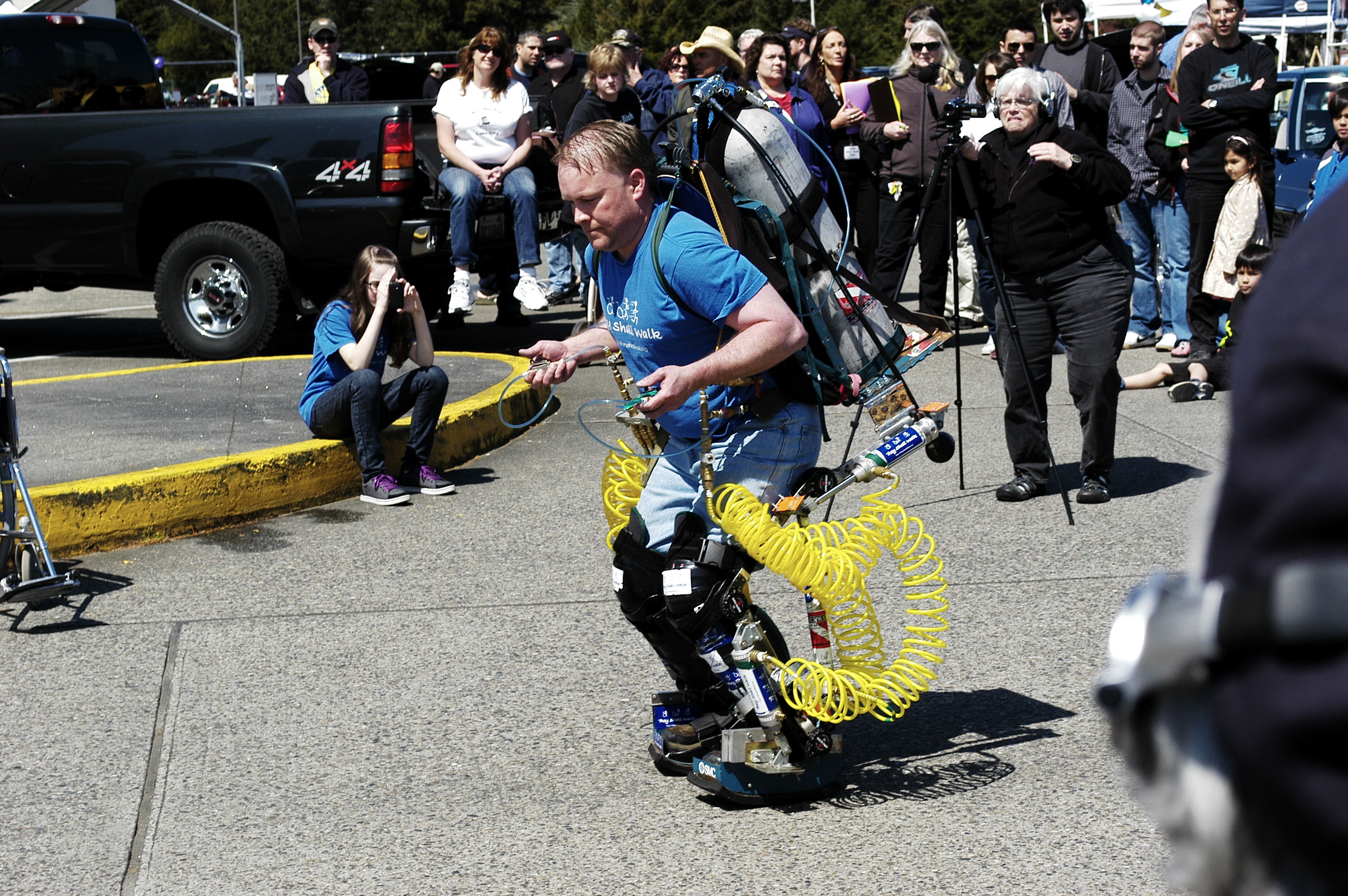Monty K. Reed jumped out of an Army airplane in 1986 and broke his back. He hadn’t wanted to jump out of airplanes. He originally wanted to be a research scientist. But research scientists usually don’t have learning disabilities. While Reed is extremely talented in certain areas, he’s a terrible mathematician who can’t spell very well. High-school teachers told him he couldn’t go to college. So he joined the Army and started jumping out of airplanes. He thought it was his only real option, he explained recently by phone.
“After my third year, I did a physics experiment with parachutes and gravity,” Reed jokes. “Gravity always works, parachutes don’t.”
Twenty years after his accident, the first Maker Faire was held in San Mateo, California. The new movement of “Makers”—DIY craftspeople turning their garages into laboratories and production facilities—would soon be augmented by the Web. Want to build a 3-D printer? Get on the Internet, and the instructions are there. Want to build a robot? Get on the Internet, and the instructions are there.
Now in its third year, the Seattle Mini Maker Faire at the EMP Museum is a licensed offshoot of the 2006 San Mateo original—since expanded to New York, China, the UK, and beyond. The expos celebrate innovation from those without Ph.D.s or conventional academic backing, which means some 70 display booths this weekend will feature homemade biodomes, DIY supercars, and balloon satellites. Reed, last year’s festival prize winner, will be there, showing the sci-fi-inspired creations he dreamed into reality while recovering from his fateful injury.
In 1986, when Reed lay paralyzed in his Army hospital bed, the Internet hadn’t yet been invented. With nothing else to do, he picked up a copy of Robert A. Heinlein’s 1959 sci-fi novel Starship Troopers. The book described mechanical armor suits that enabled soldiers who wore them to lift thousands of pounds and jump on top of buildings. Reed recalls, “I read that, and I thought, ‘You know, if I could build one of those things, program it to walk, and then get in it, I could walk again.’ ”
Reed decided he would make his own Starship Troopers suit. The military doctors were saying he’d never walk again, but a sci-fi exoskeleton could change all that. His physicians allowed him access to Medline, a pre-Internet database of medical research papers, and he begin to study—and that’s the essential spirit of Maker Faire.
“Japanese and German neurologists had claimed nerve damage was not permanent,” says Reed. “They had proved that nerves actually heal. American doctors had always claimed that nerve damage was permanent. There was controversy, but I just chose to go with what was most beneficial to believe, which was that I could learn to walk again.” While Captain America might’ve shuddered at trusting the Axis powers’ scientific research, Reed’s approach was much more Iron Man—as the latter movies reflect. (Ironically, the 1997 Starship Troopers film adaptation didn’t feature such suits, but you’ll see them in both RoboCop movies and the recent Elysium.)
Inexplicably, Reed’s hands and toes started working again a month after the accident. By that time, he’d already made a preliminary design for his suit. But he didn’t need it anymore—he learned to walk again without the aid of canes or braces. Reed would create a dozen more exoskeleton suits before enrolling at North Seattle Community College, attending the UW, and founding a nonprofit called They Shall Walk.
Today Reed has a 10,000-square-foot warehouse in Georgetown where “mech-suits,” powered by compressed air, lumber around. Yellow pneumatic coils attached to a scuba tank spill from the sides of the suits, which allow quadriplegics to walk, jump, and hoist 155-pound dumbbells. A fleet of volunteer engineers and “test pilots,” many with learning disabilities, gather at the warehouse to help develop home-use and occupational-therapy variants on Reed’s working prototype.
Reed and his DIY colleagues might not match the usual definition of engineers, but they’re exactly the sort of oddball inventors you’ll meet at the Mini Maker Faire. “The system tells you that you can’t do it unless you meet this certain criteria,” Reed says. “But there are people who have talent, and that talent is the criteria.”
Of course there will be drones
and robots this weekend. One of the latter comes from David Lang, who created the OpenROV deep-sea exploration robot in his California garage. He’ll be demonstrating his rover in a pool at EMP, this model following the original idea he and a friend had to explore an underwater cave in the Sierras that supposedly held lost gold from a California Gold Rush–era robbery.
“It’s magic,” says Lang, who is coming to the Mini Maker Faire in part to meet with his new partner The Paul Allen Foundation, which recently gave Lang a grant to put the OpenROV in schools. “It’s just infectious being around so many people who are in love with what they are doing,” he says.
And the Mini Maker Faire isn’t just about tech: Dancers will trigger modulating fractal video projections; robots will draw murals; and sewing enthusiasts will debut their crocheted creations destined for the spotlight at Burning Man.
In some ways, the Seattle Mini Maker Faire might end up looking like a scale model of Burning Man—an army of strange people with a lot of excess energy and a fascination with lasers. Just expect a lot more algorithms and a lot less acid.
ksears@seattleweekly.com
SEATTLE MINI MAKER FAIRE EMP Museum, 325 Fifth Ave. N. (Seattle Center), 770-2700, empmuseum.org. $8–$25. 10 a.m.–5 p.m. Sat., March 22–Sun., March 23.











